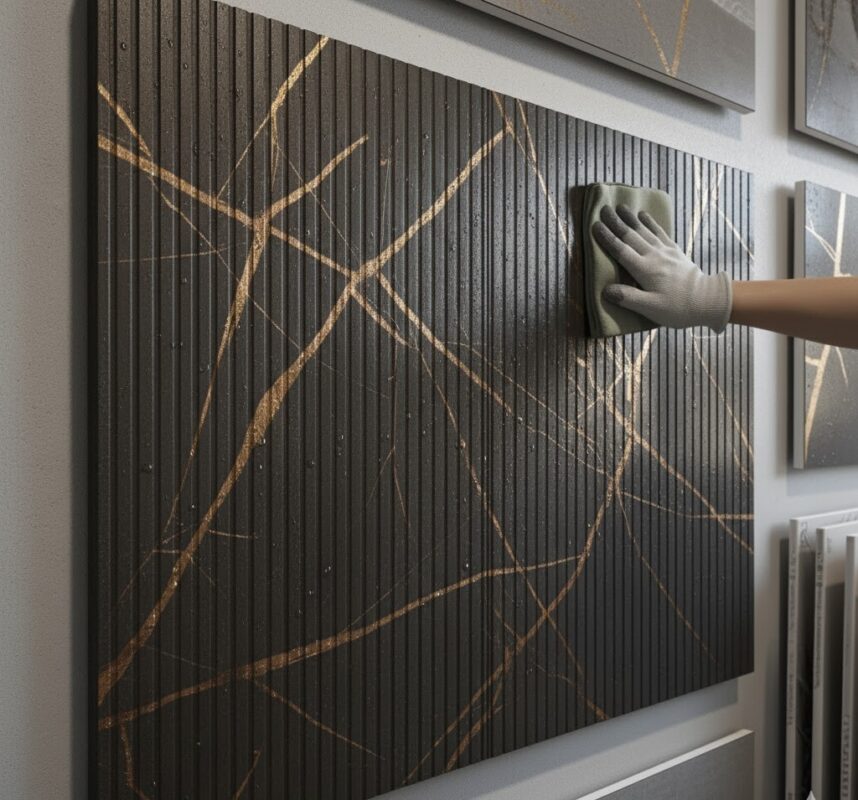One of the most common questions homeowners ask about PVC panels is whether they can be painted. The answer is yes, but it comes with specific requirements and considerations that will determine the success of your project. Whether you’re looking to refresh the color of existing panels or want a custom finish, this guide will walk you through everything you need to know.
The Short Answer
Yes, PVC panels can be painted. However, because PVC is a plastic material with a smooth, non-porous surface, painting it isn’t as straightforward as painting drywall or wood. The key to a successful paint job is proper preparation and using the right type of paint and primers.
Why Painting PVC Panels Is Different
Understanding why PVC requires special attention when painting will help you achieve better results.
The Smooth Surface Problem: PVC panels have an inherently slick, smooth surface designed to resist moisture and staining. While these properties are great for durability, they make it difficult for standard paint to adhere properly. Paint needs something to “grip” to, and PVC’s smooth finish doesn’t provide that naturally.
Material Compatibility: Not all paints are formulated to bond with plastic materials. Using incompatible paint can lead to peeling, flaking, and a finish that doesn’t last. This is why choosing the right paint type is crucial.
Flexibility Requirements: PVC panels can expand and contract slightly with temperature changes. Paint that’s too rigid can crack or peel as the material moves. You need paint that can flex along with the panels.

Preparing Your PVC Panels for Painting
Proper preparation is the most important step in ensuring your paint job looks good and lasts long.
Clean Thoroughly: Start by washing the panels with a mixture of mild soap and warm water. Remove any dirt, dust, grease, or stains that might prevent paint adhesion. Rinse well and allow the panels to dry completely—this is essential before proceeding.
Sand the Surface: This is the critical step that many people skip. Lightly sand the PVC panels with medium-grit sandpaper (around 120-150 grit) or a sanding sponge. This roughens the smooth surface, creating a texture that allows primer and paint to adhere better. Sand in the direction of the grain if your panels have one. Wipe away all dust with a damp cloth and let dry.
Use a Primer: Never skip the primer step when painting PVC. A bonding primer or PVC-specific primer is essential for creating a foundation that paint can stick to. Primers are formulated to grip plastic surfaces where regular paint cannot. Apply the primer according to the manufacturer’s instructions and allow it to cure fully before painting.
Choosing the Right Paint
Selecting the appropriate paint is just as important as preparing the surface.
Acrylic Latex Paint: This is generally the best choice for PVC panels in most applications. It’s water-based, low-odor, and breathable, which helps reduce the risk of peeling. Make sure it’s specifically labeled as suitable for plastic or plastic trim.
Oil-Based Paint: While oil-based paints can work on PVC, they take longer to dry and have stronger fumes. They’re also less flexible than latex paints, which can lead to cracking. However, oil-based paint may provide better durability in some outdoor applications.
Specialty Plastic Paints: Some manufacturers produce paints specifically formulated for plastic surfaces. These premium options often provide superior adhesion and durability, though they cost more than standard paints.
Two-Part Epoxy Paint: For high-performance applications where durability is critical, two-part epoxy paints offer excellent adhesion and wear resistance. These require careful mixing and application but provide outstanding results.
Avoid: Don’t use flat latex paint on high-moisture areas like bathrooms, as it doesn’t resist moisture as well as satin or semi-gloss finishes.
The Painting Process
Once your panels are prepped and primed, follow these steps for a professional-looking finish.
Apply primer first, using either a brush, roller, or spray, depending on your surface area and comfort level. Two coats of primer are recommended for best results. Allow each coat to dry completely according to the product instructions before applying the next coat. After the primer is fully cured, apply your chosen paint. Most paints require two coats for optimal coverage and color consistency. Apply thin, even coats rather than one thick coat, which can lead to drips and uneven coverage. Allow adequate drying time between coats and before exposing the painted panels to moisture or heavy use.
Color and Finish Considerations
While you have plenty of color options, keep a few things in mind. Satin or semi-gloss finishes are more moisture-resistant than matte finishes and easier to clean, making them ideal for bathrooms and kitchens. Glossy finishes provide the best moisture protection but show dust and fingerprints more easily. Consider the surrounding décor and the amount of moisture the panels will be exposed to when choosing your finish. Darker colors will absorb more heat, which can accelerate expansion and contraction of the panels, so they may be better suited to indoor applications.
When Painting Isn’t the Best Solution
While you can paint PVC panels, sometimes there are better alternatives.
Heavily Textured Panels: If your panels have a pronounced texture, painting them can be challenging and may require more primer and paint. In these cases, you might prefer to replace them with panels in your desired color.
Frequent Color Changes: If you like to change your décor frequently, painting isn’t the most practical solution. PVC panels come in various factory colors that may better suit your needs.
Outdoor Long-Term Applications: While painted PVC can work outdoors, unpainted PVC is generally more UV-resistant. If longevity is a priority, consider leaving outdoor panels unpainted or using UV-protective paints.
Maintenance of Painted PVC Panels
Once painted, your panels will require some ongoing care to maintain the finish.
Clean painted panels with mild soap and water—avoid harsh chemicals or abrasive scrubbers that can damage the paint. Inspect the paint periodically for signs of peeling or cracking, especially around seams and edges. Touch up any damaged areas promptly to prevent water from getting behind the paint. Repaint the panels if they become worn or damaged, following the same preparation and painting process as the original application.
Frequently Asked Questions
How long does paint last on PVC panels?: With proper preparation and paint selection, a paint job should last five to ten years. High-quality paints and well-executed applications can last even longer.
Can I paint over existing paint on PVC panels?: Yes, but you should still sand the existing paint lightly and apply primer before repainting to ensure good adhesion.
Is it cheaper to paint panels or replace them?: Painting is usually more affordable than replacing panels, especially if you only want to change the color. However, if the panels are damaged, replacement may be the better option.
What if my paint is peeling?: If paint peels, it usually means the surface wasn’t properly prepared or primed before painting. Sand off the peeling paint, re-prime, and repaint using the correct process.
The Bottom Line
Yes, PVC panels can be painted, and doing so opens up endless design possibilities for customizing your space. The key to success is understanding that PVC requires special preparation—specifically sanding and priming—to ensure the paint adheres properly and lasts for years. By investing time in proper surface preparation, using quality primer and paint, and following the right application techniques, you can achieve a beautiful, durable finish on your PVC panels. Whether you’re refreshing a bathroom, updating a kitchen, or customizing a commercial space, painted PVC panels offer a cost-effective way to get the look you want.

